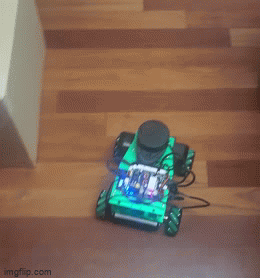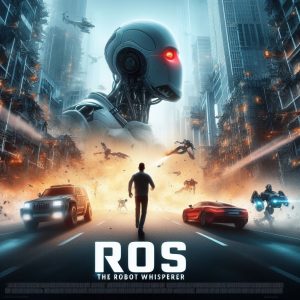The introduction of the Raspberry Pi 5 last Sept.28 2023, marks a significant step forward in single-board computing. With its enhanced processing power, improved display capabilities, and upgraded connectivity options, it offers users a no-compromise experience that far surpasses its predecessor, the Raspberry Pi 4.
Key Features of Raspberry Pi 5

The Raspberry Pi 5 comes packed with impressive features14. At its heart is a 2.4GHz quad-core 64-bit Arm Cortex-A76 CPU, a significant upgrade from the 1.5GHz quad-core Arm Cortex-A72 CPU found in the Raspberry Pi 42. The new model also boasts a VideoCore VII GPU, which supports OpenGL ES 3.1 and Vulkan 1.21.
One of the standout features of the Raspberry Pi 5 is its ability to support dual 4Kp60 HDMI display output15, a considerable improvement from the single 4K30 display that the Raspberry Pi 4 could drive2. This makes it an excellent choice for multimedia applications.
Connectivity options have also been enhanced in the Raspberry Pi 5, with dual-band 802.11ac Wi-Fi, Bluetooth 5.0, and Bluetooth Low Energy (BLE)14. It also includes a high-speed microSD card interface with SDR104 mode support
Raspberry Pi 5 and Raspberry Pi 4
| Raspberry Pi 5 | Raspberry Pi 4 | |
| SoC | Broadcom BCM2712 | Broadcom BCM2711 |
| — CPU | Quad-Core Cortex-A76 (ARM v8) 64-bit @ 2.4 GHz | Quad core Cortex-A72 (ARM v8) 64-bit @ 1.8 GHz |
| — GPU | VideoCore VII @ 800 MHz Supports: OpenGL ES 3.1, Vulkan 1.2 | VideoCore VI @ 500 MHz Supports: OpenGL ES 3.1, Vulkan 1.0 |
| Display Output | 2 x 4kp60 MINI HDMI Display Output Both can use 4kp60 | 2 x 4kp60 Mini HDMI One at 4Kp30 when both in use |
| Memory | LPDDR4X-4267 SDRAM 4GB, or 8GB | LPDDR4-3200 SDRAM 1GB, 2GB, 4GB or 8GB |
| Storage | Micro SD (SDR104 Compatible) M.2 NVME SSD Support via HAT | Micro SD |
| GPIO | 40 PIN – Compatible with old Raspberry Pi HAT’s | 40 PIN |
| USB | 2 x USB 2.0 2x USB 3.0 @ 5 Gbps | 2 x USB 2.0 2 x USB 3.0 |
| Connectors | 2 x 4-lane MIPI camera / display transceivers PCIe 2.0 x1 Interface UART Breakout RTC Clock Power 4-Pin FAN Power | 2-lane MIPI DSI Display Port 2-lane MIPI CSI Camera Port 4-Pole Stereo Audio and Composite Video Port |
| Networking | Dua-Band 802.11ac Bluetooth 5 / BLE Gigabit Ethernet PoE via POE + Hat (Incompatible with old version) | Dua-Band 802.11ac Bluetooth 5 / BLE Gigabit Ethernet PoE via POE + Hat |
| Power Button | Soft power button | None |
| Power Input | 5V 4A via USB-C Port PoE via POE+ HAT (Incompatible with old version) 5V via GPIO | 5V 3A via USB-C Port POE via POE+ HAT 5V via GPIO |
Processing Power
The most significant difference lies in their processing power. The Raspberry Pi 5’s 2.4GHz quad-core Arm Cortex-A76 CPU offers a substantial performance boost over the Raspberry Pi 4’s 1.5GHz quad-core Arm Cortex-A72 CPU12.
Display Capabilities
The display capabilities have also seen a major upgrade. While the Raspberry Pi 4 could drive a single 4K30 display, the new Raspberry Pi 5 supports dual 4Kp60 HDMI display output125.
Connectivity
In terms of connectivity, both models support Wi-Fi and Bluetooth. However, the Raspberry Pi 5 offers improved performance with its dual-band 802.11ac Wi-Fi and Bluetooth 5.0 / Bluetooth Low Energy (BLE)
Using SLAM and ROS

The performance of SLAM (Simultaneous Localization and Mapping) and ROS (Robot Operating System) on Raspberry Pi 5 vs Raspberry Pi 4 would largely depend on the specific use case and the exact configuration of the systems. However, given the significant hardware improvements in Raspberry Pi 5, it’s reasonable to expect better performance in most scenarios.

The Raspberry Pi 5 has a more powerful 2.4GHz quad-core 64-bit Arm Cortex-A76 CPU, compared to the 1.5GHz quad-core Arm Cortex-A72 CPU in the Raspberry Pi 412. This could potentially lead to faster processing times for SLAM and ROS applications.
Moreover, the Raspberry Pi 5 supports dual 4Kp60 HDMI display output1, which could be beneficial for visual SLAM applications that require high-resolution video input.
However, it’s important to note that the performance of SLAM and ROS also depends on other factors such as the specific SLAM algorithm used, the quality and type of sensors, and the complexity of the environment.
For a definitive comparison, we would need real-world benchmarking data comparing the performance of SLAM and ROS on both Raspberry Pi 4 and Raspberry Pi 5. As this data becomes available, it will provide a clearer picture of the performance differences between these two devices.
Raspberry 5 VS Jetson Nano
Raspberry Pi 5

Features:
- 2.4GHz quad-core 64-bit Arm Cortex-A76 CPU
- VideoCore VII GPU
- Dual 4Kp60 HDMI display output
- Dual-band 802.11ac Wi-Fi, Bluetooth 5.0, and Bluetooth Low Energy (BLE)
- High-speed microSD card interface with SDR104 mode support
Advantages:
- Significant speed boost compared to its predecessor
- Dual camera/display support
- Built-in real-time clock
- Small price increase compared to Raspberry Pi 4
- Cheaper if you plan on running simple tasks
Disadvantages:
- Some older HATs and add-ons may not have software support right away
- Needs active cooling due to increased performance
Jetson Nano

Features:
- 128-core NVIDIA Maxwell™ architecture-based GPU
- Quad-core ARM® A57 CPU
- 4K @ 30 fps (H.264/H.265) / 4K @ 60 fps (H.264/H.265) encode and decode
- MIPI CSI-2 DPHY lanes, 12x (Module) and 1x (Developer Kit)
- 4 GB 64-bit LPDDR4; 25.6 gigabytes/second
- Gigabit Ethernet
Advantages:
- More powerful GPU and CPU compared to Raspberry Pi, making it more suitable for heavy tasks and running a desktop environment.
- Better performance for AI applications due to its design specifically for AI applications.
- Can process multiple video streams, up to eight 1080p video feeds at a time.
Disadvantages:
- More expensive than the Raspberry Pi.
- May be overkill for simple tasks or projects that don’t require advanced AI or GPU capabilities.
In conclusion, the choice between Raspberry Pi 5 and Jetson Nano depends on your specific needs and budget. If you’re working on a project that requires advanced AI capabilities or heavy computing tasks, the Jetson Nano might be a better choice. On the other hand, if you’re looking for a cost-effective solution for simpler tasks or projects, the Raspberry Pi 5 would be a great option.
Whether you’re an enthusiast looking to experiment with new projects, an educator seeking a powerful tool for teaching coding and electronics, or a professional design engineer in need of a compact and capable device, the Raspberry Pi 5 is an exciting addition to the world of single-board computers.
In the world of technology, the choice between Raspberry Pi 4 and Raspberry Pi 5 for your SLAM and ROS applications ultimately boils down to your specific requirements and the level of customization you seek. While Raspberry Pi 5 offers impressive hardware enhancements, your ability to harness its potential depends on your unique project needs and configurations.
At Nice Future Inc., we understand that every innovative idea requires a tailored approach. With our 27 years of experience in pioneering the future of technology, we stand ready to transform your vision into reality. Whether you’re on the cusp of a groundbreaking project or simply exploring the possibilities, we’re here to support you every step of the way. Don’t hesitate to reach out—give us a call or drop us a message—because your technological journey is our top priority.
Subscribe to our newsletter!




